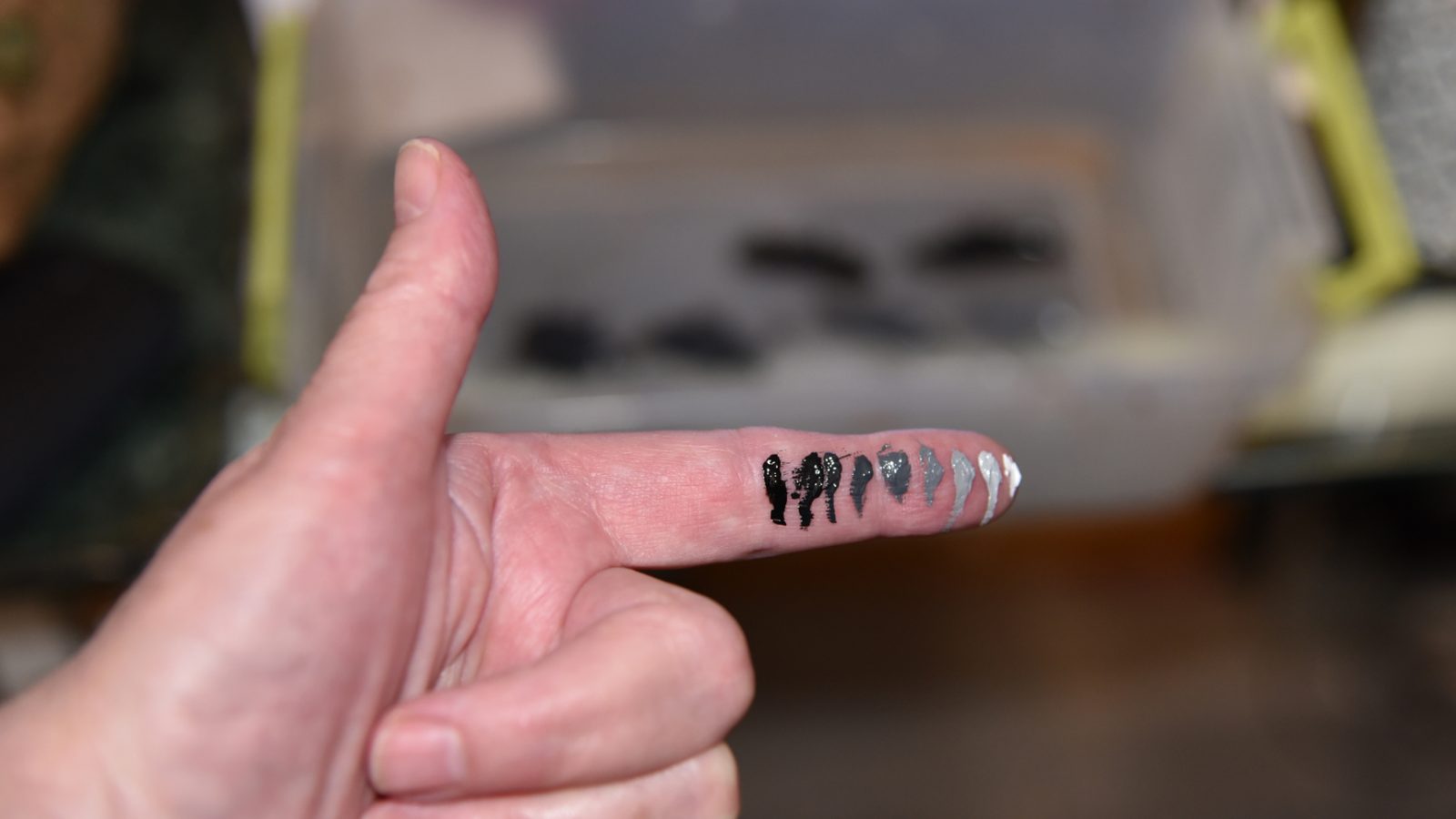Every artist sets up their own studio with materials, equipment and tools they use in creating their work.
For those who are interested or curious, here are mine.
For my drawings (including preparatory drawings for the paintings)
Tracing paper (for loads of quick sketches) and vellum paper (when I want an acid free see through material)
.03mm mechanical pencil (with HB and/or B leads) for the sketches and line drawings
.05mm mechanical pencil (B leads) to retrace the lines on the back of the final line drawing (on vellum paper). It is a bit softer and thicker than the .03 lead and therefore transfers more readily to the final surface. If the detail is very small, for the back, I’ll use the B lead in the .03mm mechanical pencil.
Small rounded object to rub the lines of the drawing without smearing them to transfer the final line drawing (I use a quality pen cap) to the preferred surface (Bristol Paper or Mahogany Board).
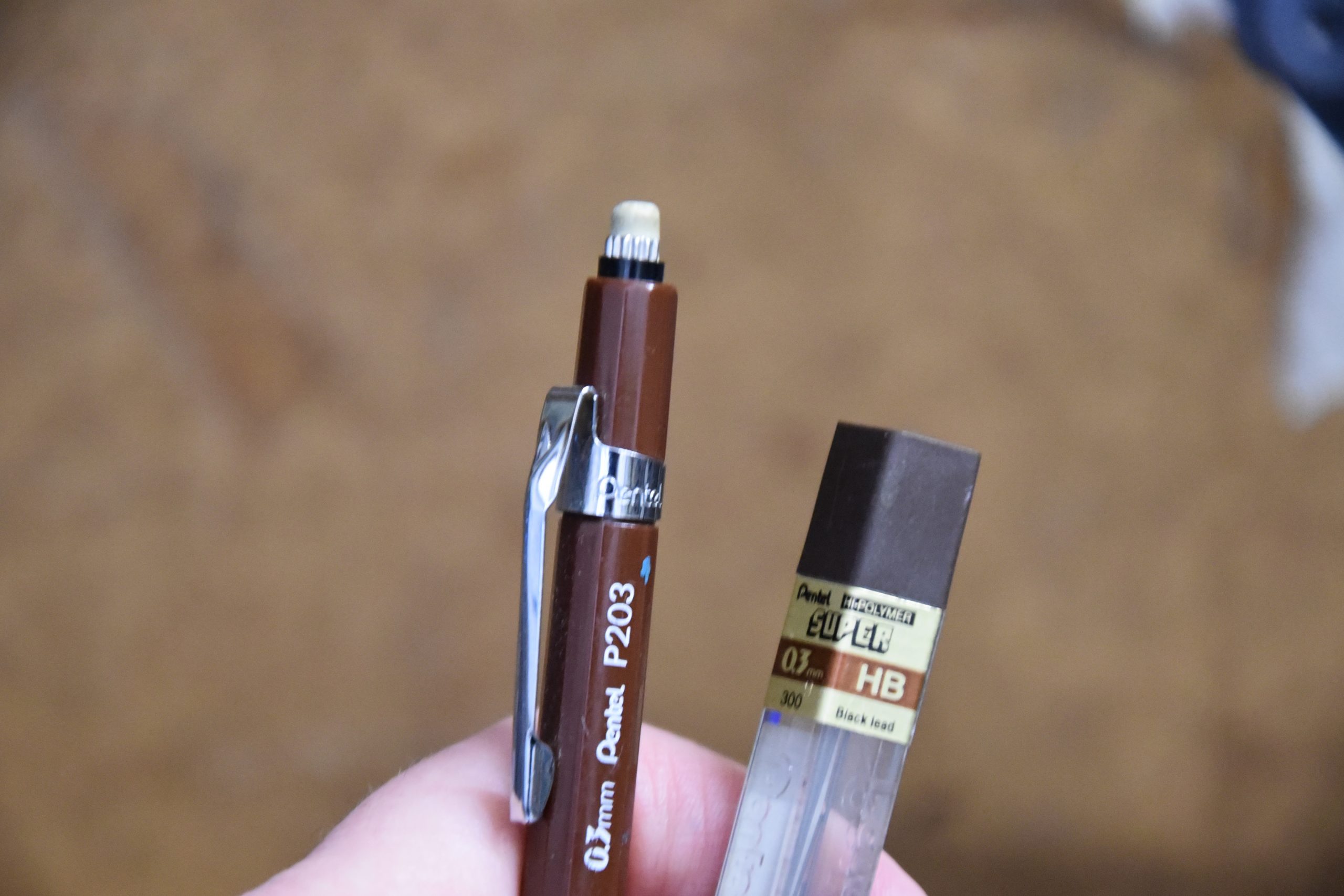
Photo ©2022 Ann James Massey
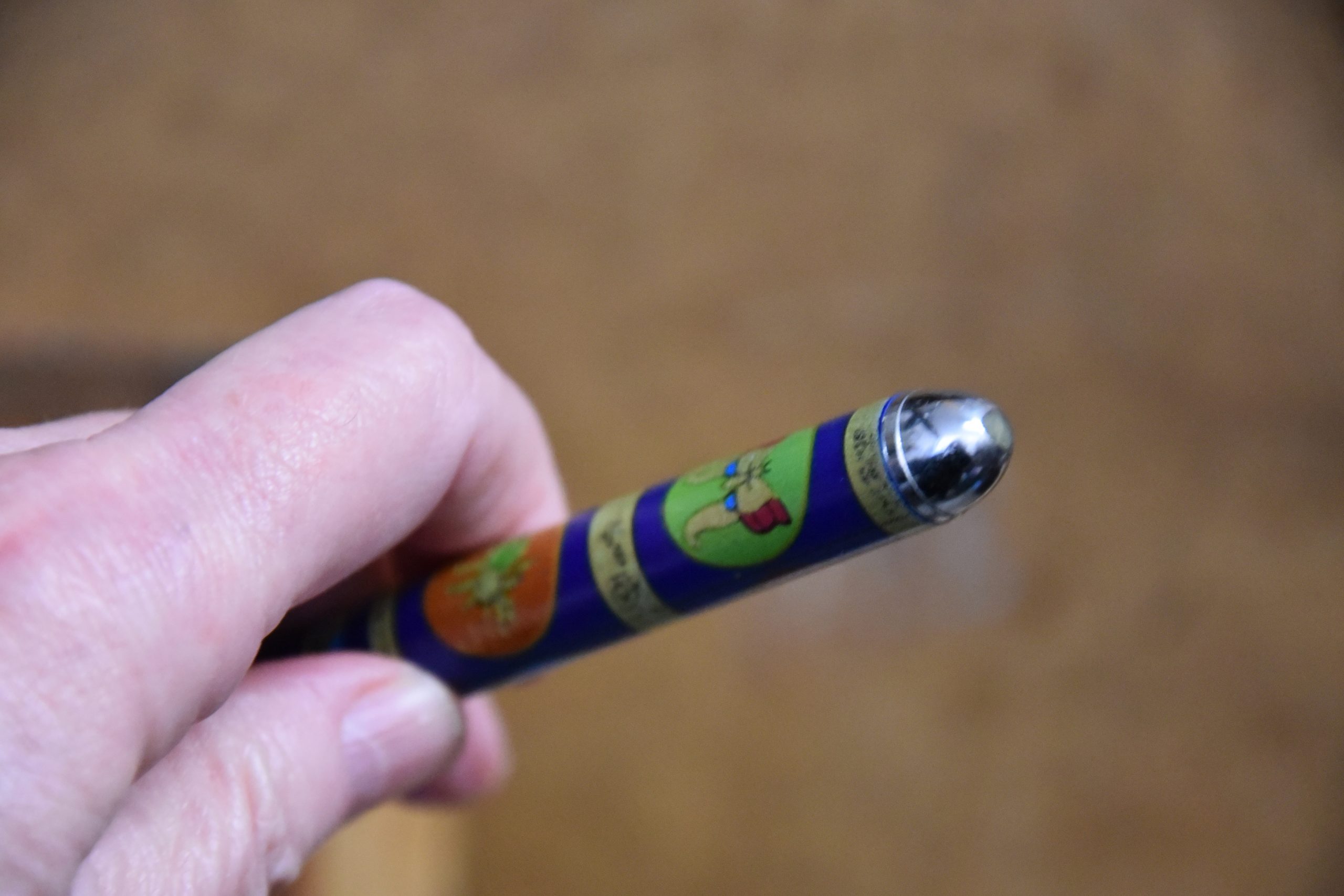
Photo ©2022 Ann James Massey
Kneaded eraser not only for erasing but to dab and lift the excess carbon left from the B lead after transferring my drawing to the bristol paper or prepared board in painting.
Bristol paper plate finish is my preferred surface for the final wax pencil drawing, though I have worked on other acid free surfaces including museum board and illustration board.
Black Wax Pencil (I use a black Prismacolor pencil, but there are many excellent brands of colored pencil available)
96 Hole Plastic Pencil & Brush Holder Multi Bin Organizer is useful to hold my sharpened pencils
Drawing board or other hard surface to place my bristol paper on. The main thing is that I am looking at the paper straight on and not at an angle. That means I can also lean the board on my lap against any surface as long as my face is parallel to the board. When you work with the drawing angled away from you, your perspective changes.
Note: I place a piece of tracing paper under my hand when I’m working to keep my hand from rubbing the paper and transferring any body oils.
OptiVisor with interchangeable lenses (I mostly use a number 7 magnification). I use this when needed for detail work.
Drafting tape to hold my drawing in place.
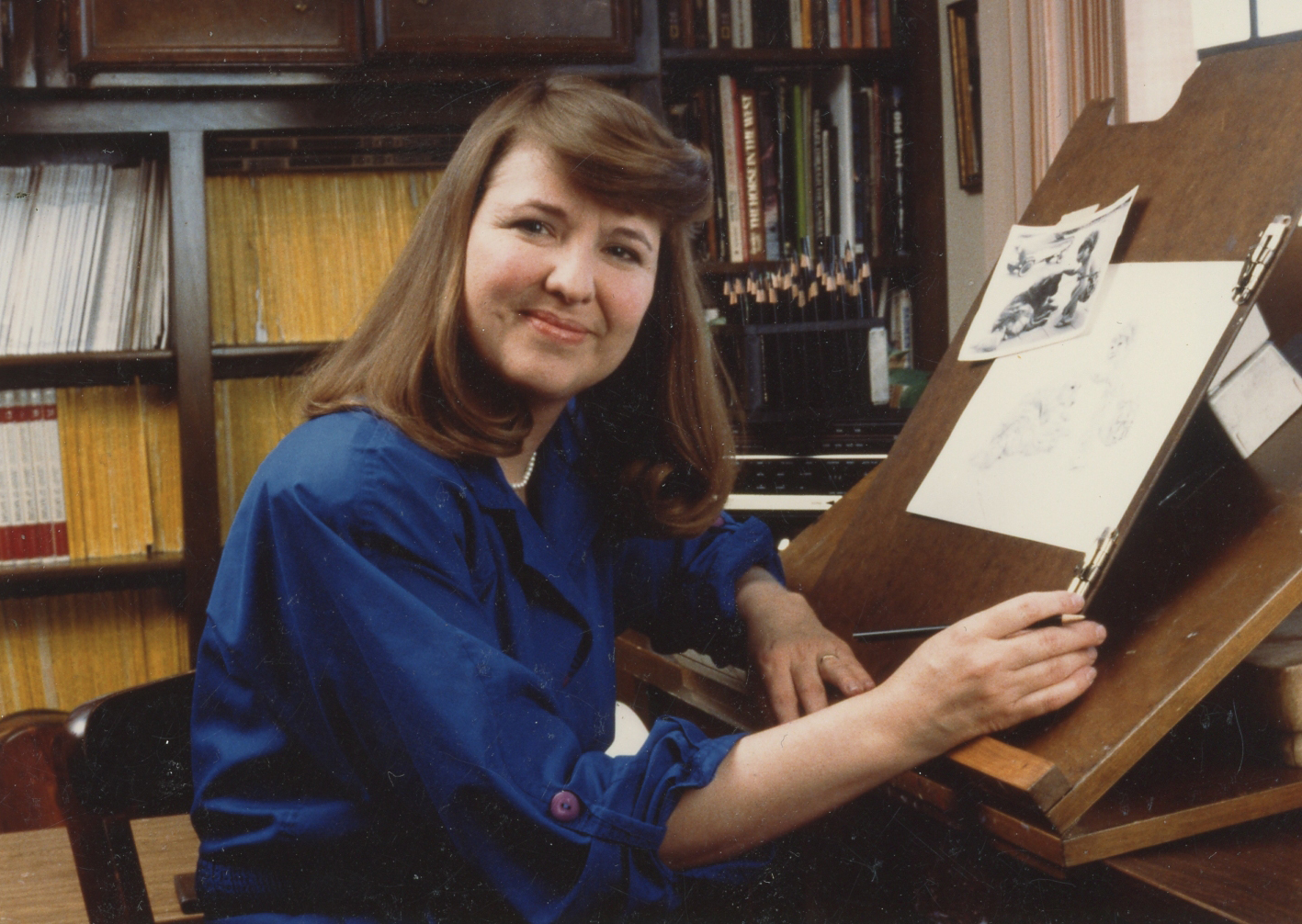
Photo ©1994 Business ’94
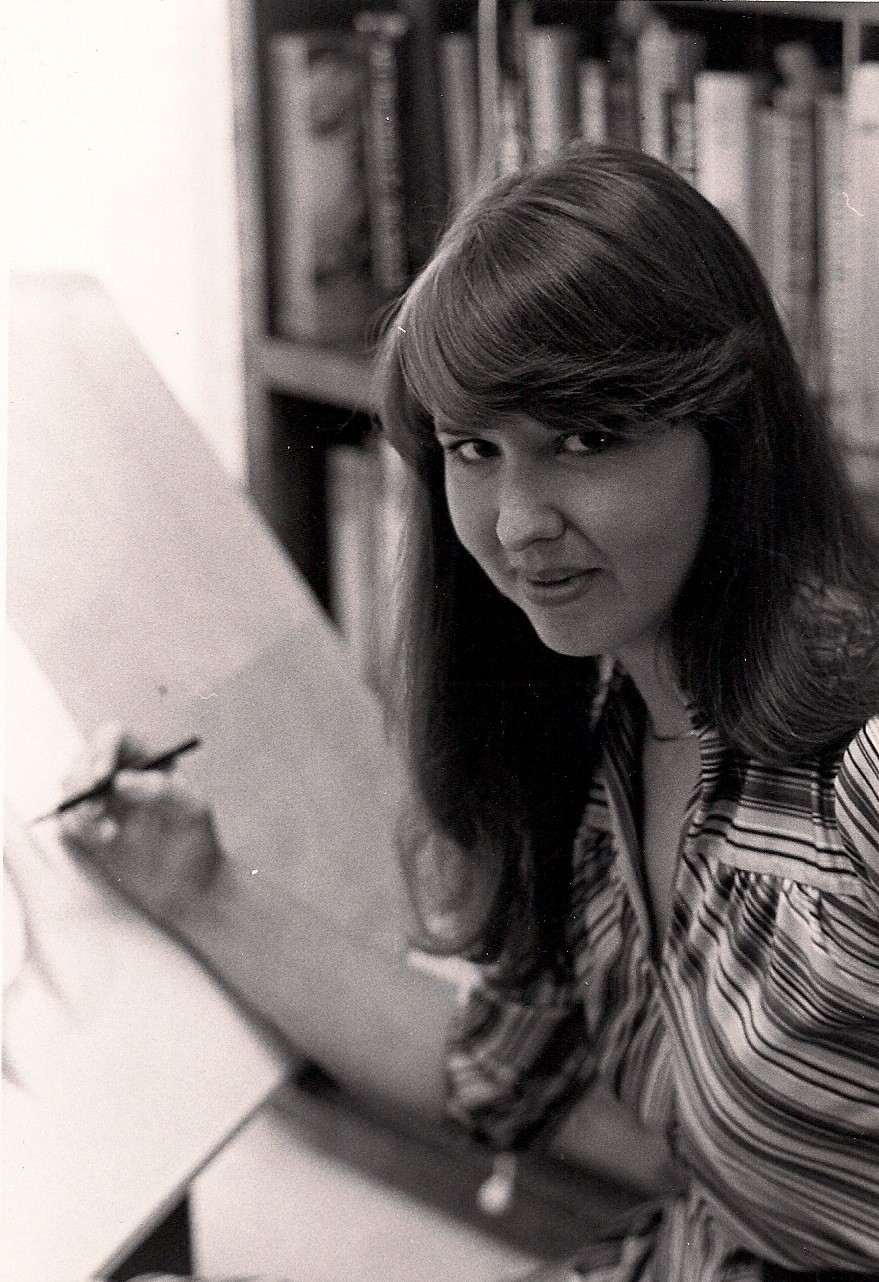
Photo ©1982
For my paintings
Sapele Mahogany boards. These are mahogany plywood boards, cut to size and prepared with three coats of rabbit skin glue and two coats of whiting (more on that in a future post).
Maroger black oil. This is cold pressed linseed oil boiled with lead in a special process until it turns a clear dark brown (more on that in a future post). I used to make my own, but now I purchase it through Classic Mediums.
Note: Why use lead in the paint and the medium? Lead is a dryer which speeds up the drying time between layers of oil paint, plus it creates a more luminous and durable paint. It is only dangerous if breathed in while in it’s powder form, or if it is placed on an open wound or ingested in any form. So I wear a mask if I’m working with the powdered form, I don’t use it as a wound ointment and I don’t stir my coffee with a loaded brush.
Powdered pigment (various brands). I use Sennelier and Rublev for the most part, but not exclusively. My palette is generally limited: Flake white (lead white), ivory black, cadmium yellow, yellow ochre, cadmium red, alizarin crimson, ultramarine blue, burnt umber & raw umber. I do like Michael Harding’s Ivory Black tubed paint which I augment with some powdered pigment and black oil.
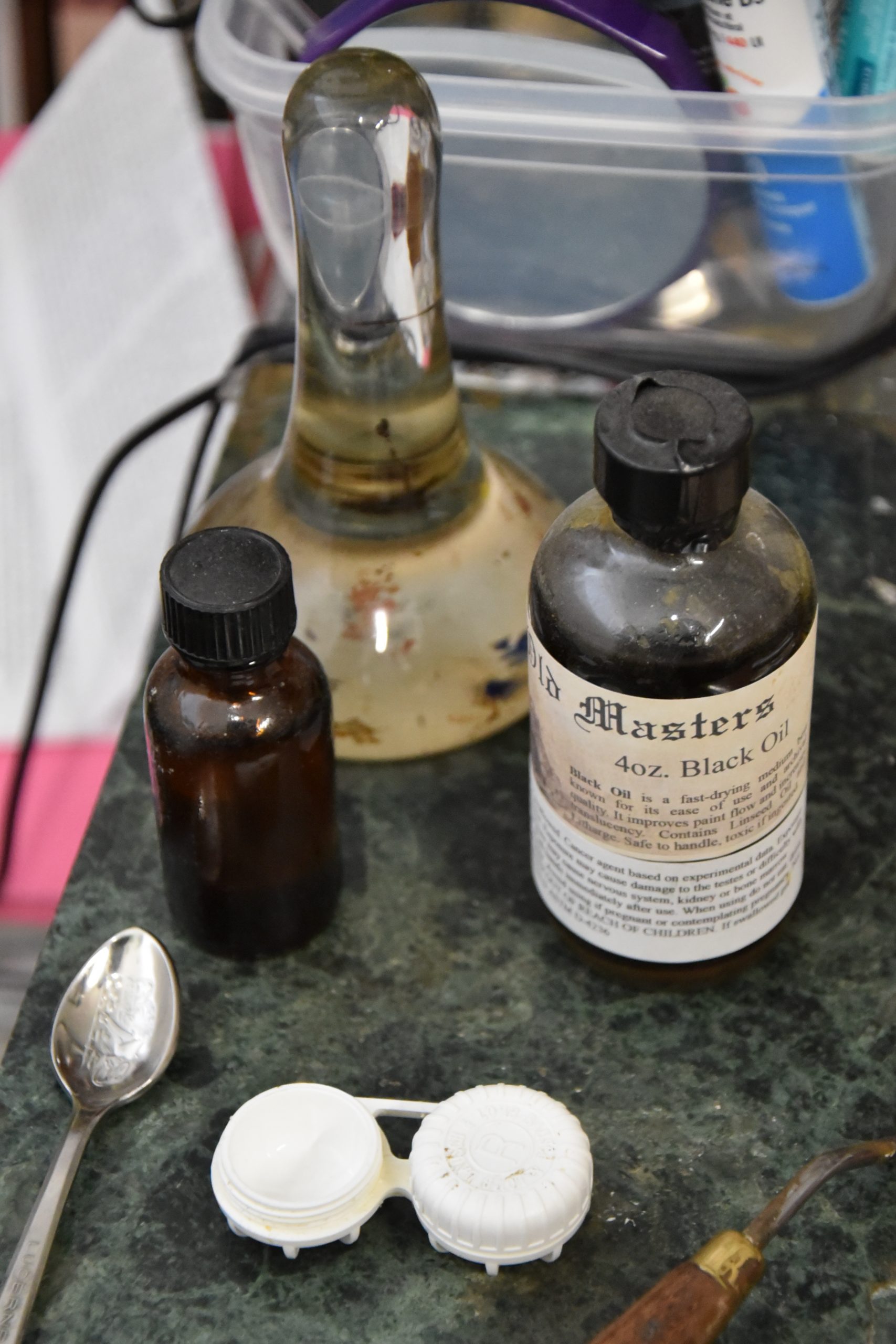
Photo ©2022 Ann James Massey
Right: My favorite go to size of palette knife. Photo ©2022 Ann James Massey
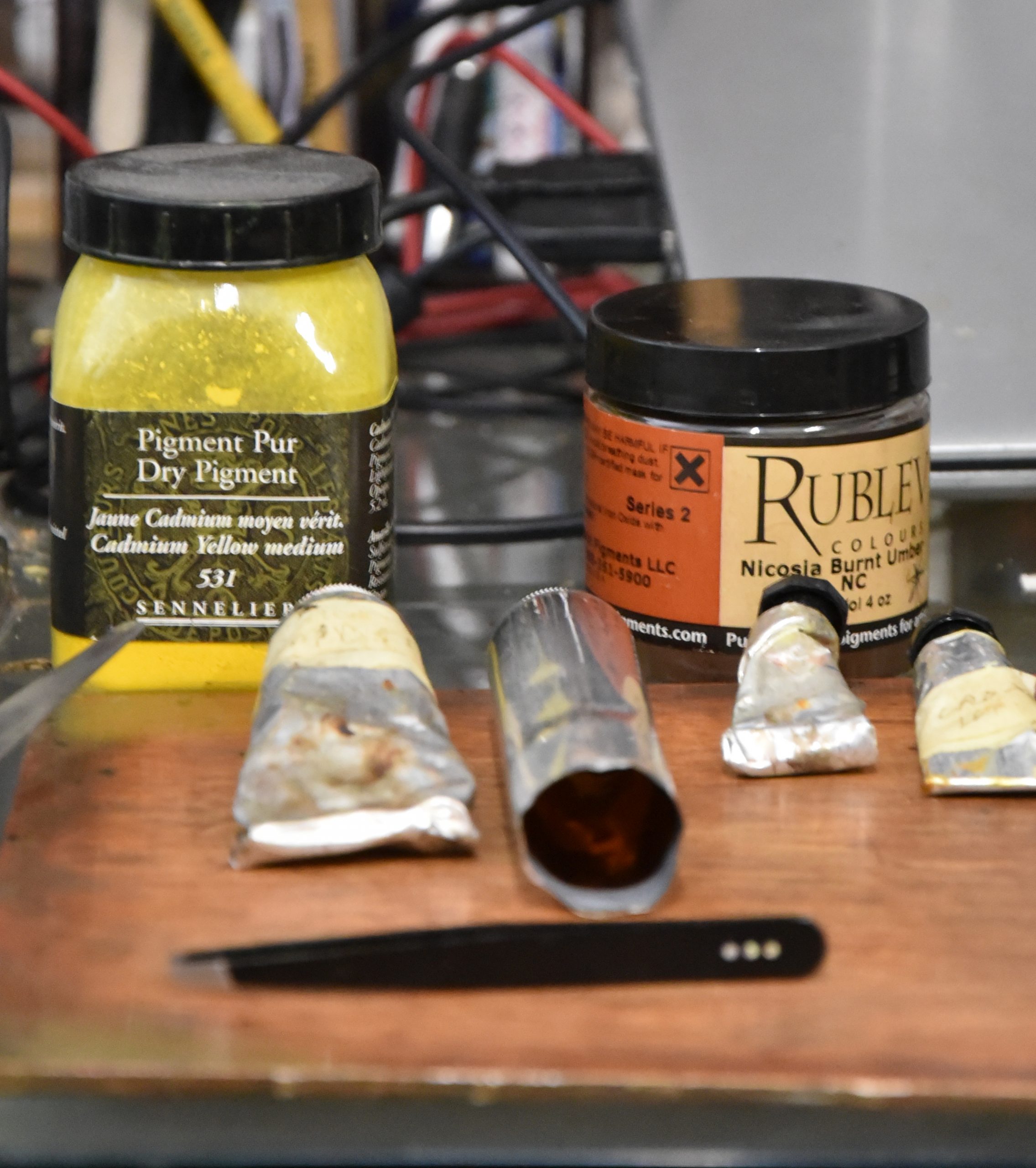
Photo ©2022 Ann James Massey
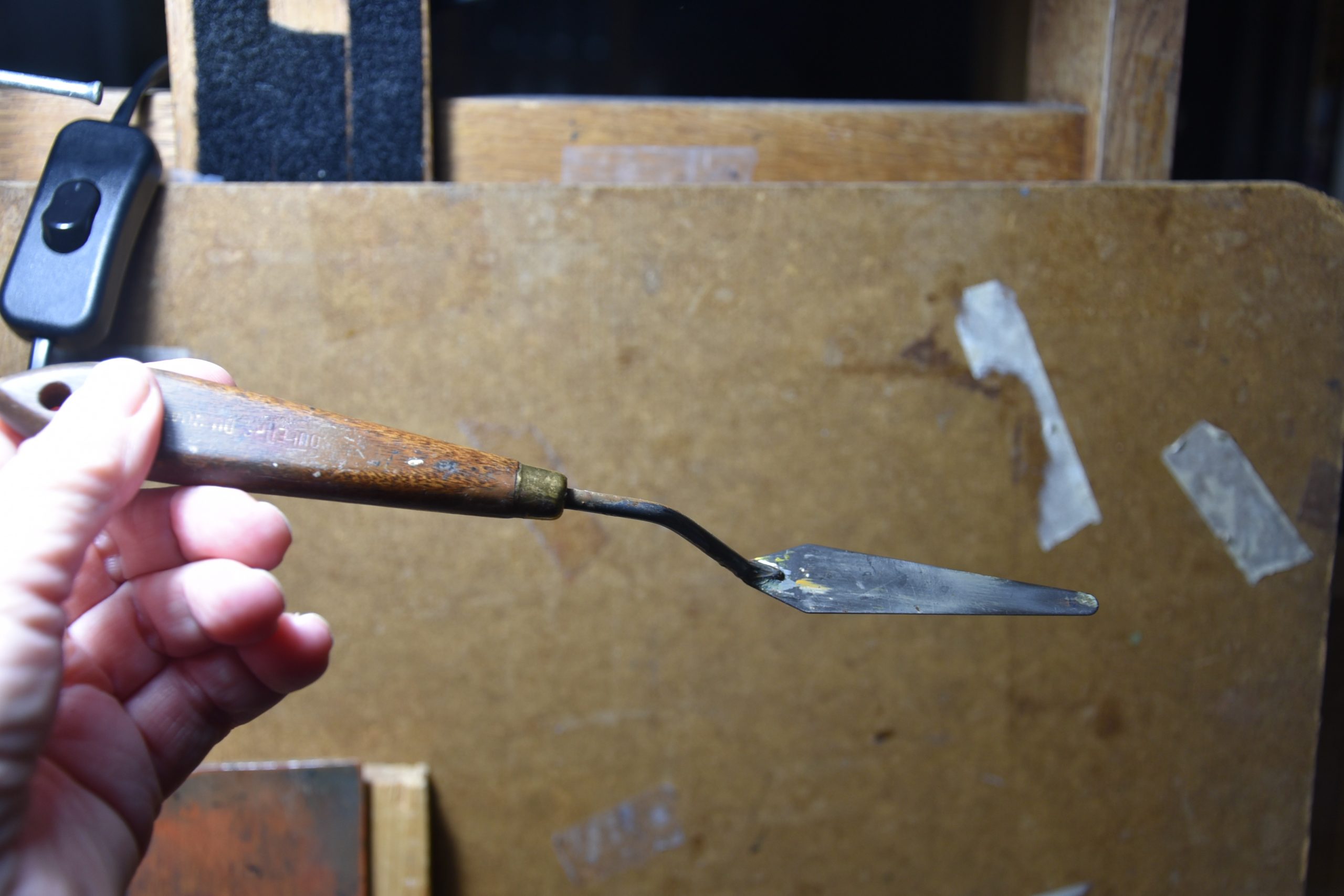
Empty paint tubes of various sizes to tube my paint mixed from the powdered pigment and the black oil.
Needle nose pliers to crimp the end of the filled tube.
Marble slab to grind my paint on. You can sometimes get a sample piece for free from a flooring store when they change their stock.
Glass muller to grind the coarser powder with the black oil to make my paint.
Palette knives to grind fine powder pigment with the oil to make my paint. Also to mix my colors and transfer them to the plastic box where I can preserve them for up to a couple of weeks, or into the tubes where they are preserved up to a year or more. My go to knife has a stainless steel blade of 3″ (7.5mm) to the crooked joined stainless steel joint attached to the wood handle.
Plastic boxes with wet sponges to store my mixed colors up to two weeks in the fridge. I often use at least two boxes to hold all the values and colors I’m working with in a particular area.
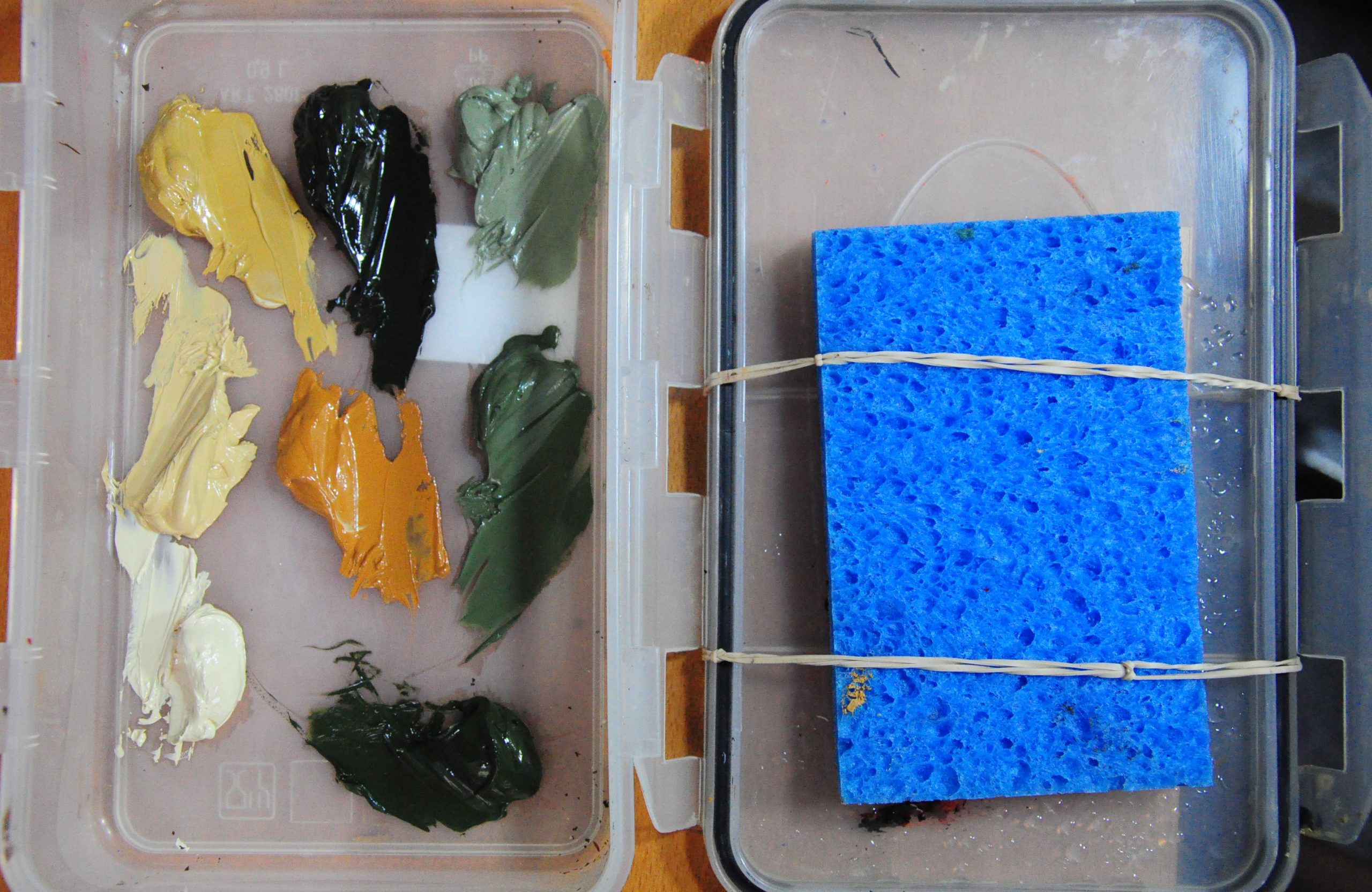
Photo © 2021 Ann James Massey

Photo © 2021 Ann James Massey
Forefinger. My palette for miniature work. I dip a separate brush into each color or value when I work.
Rectified turpentine. I do not use this to clean my brushes! I only use this sparingly to thin my burnt umber appropriated for the underpainting and for clean up on my marble slab and wood palette.
Gum mastic crystal solution. I made this myself from gum mastic crystals melted over months in rectified turpentine (more on that in a future post). This solution is in the smokey brown small bottle on top of the marble slab.
Maroger medium. I make my own by mixing the above solution with an equal amount of black oil to create my painting medium which I tube. For small amounts, I use the miniature spoon to put one spoonful of the solution first in a side of the contact lens case. Then I add to the same side one spoonful of the black oil, place the lid on and shake it vigorously. This causes it to gel into the perfect medium sufficient for a couple of days work.
The above medium can also be purchased through Old Masters, though I prefer to mix my own.
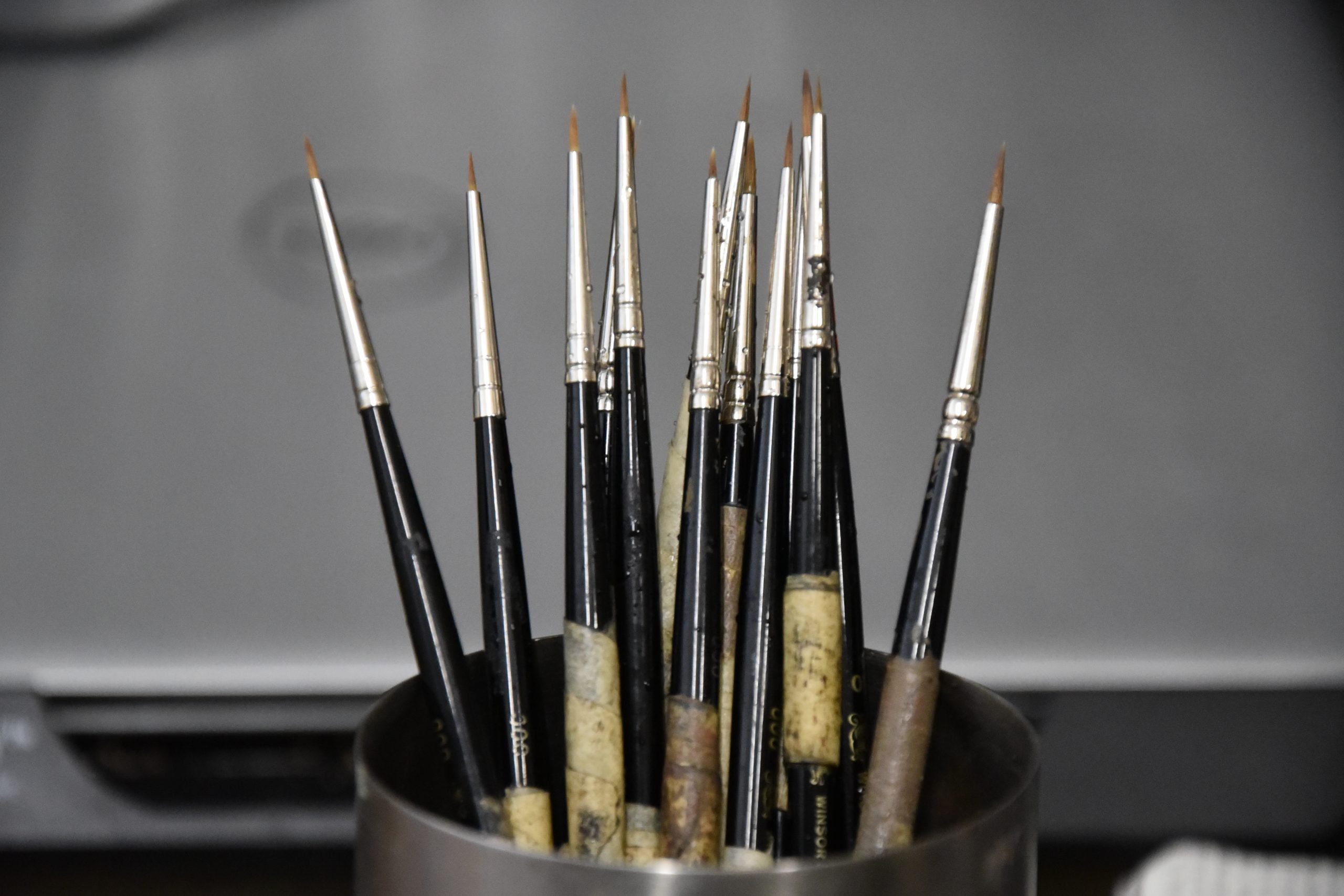
Note the drafting tape wrapped like a label around my brushes when I paint, so I can mark 1, 2, 3, 4, etc. to denote the order of the paint I am using. I paint in a controlled manner with one brush per color or value mixed, and a few extra dry brushes marked light, medium, and dark to work or pat the edges together.
Photo ©2022 Ann James Massey
Kolinsky sable brushes. I use Winsor & Newton Series 7 sizes 000, 00 and 0 brushes for most of my work, though I do use larger Kolinsky brushes of various quality brands (daVinci, Raphael, etc.) and sometimes bristle brushes depending on the area and texture. And no, I do not paint with a one hair brush…it would not hold the paint.
Hand rest for my easel. I’ve used a mal stick in the past, but for the detail work I do, I really need a hand rest. This I made for myself by taping blocks of wood to the outside uprights on my easel until I achieve a width larger than my board. Then I put a C-clamp on the blocks to the height of the desired hand rest. I then took a 3.5cm x 2cm (or a 1.5″ x 1″ will do) strip of wood and affixed a thin molding on top so there is no hard edge. I placed it on top of the jutting spines of the C-clamps and marked where they met. Then I cut a trench in the wood at those junctures so the hand rest would couple onto the round metal and lie flat. Then I fix it with packing tape which can easily be cut and removed should I want to change the orientation or remove the hand rest.
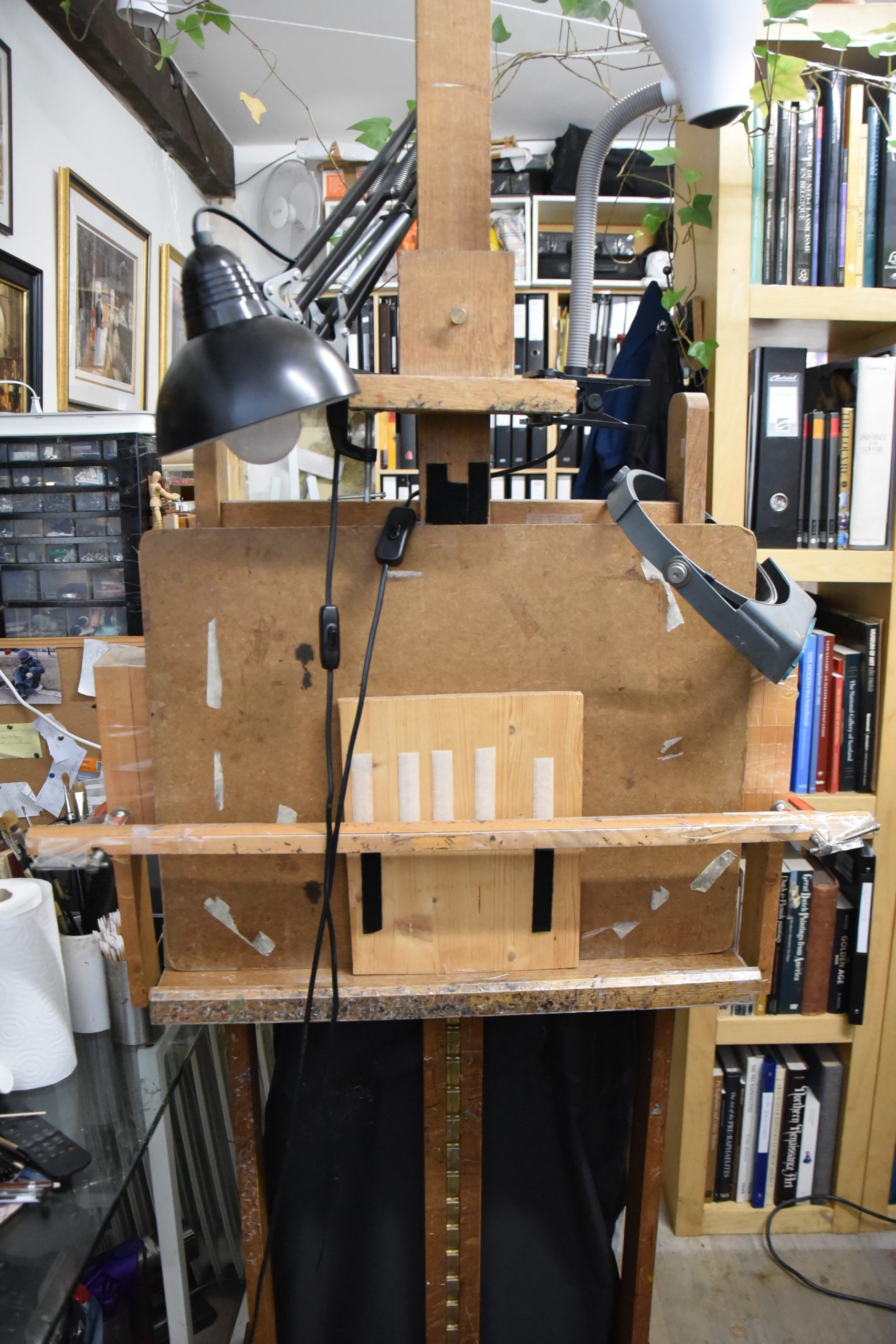
Photo ©2022 Ann James Massey
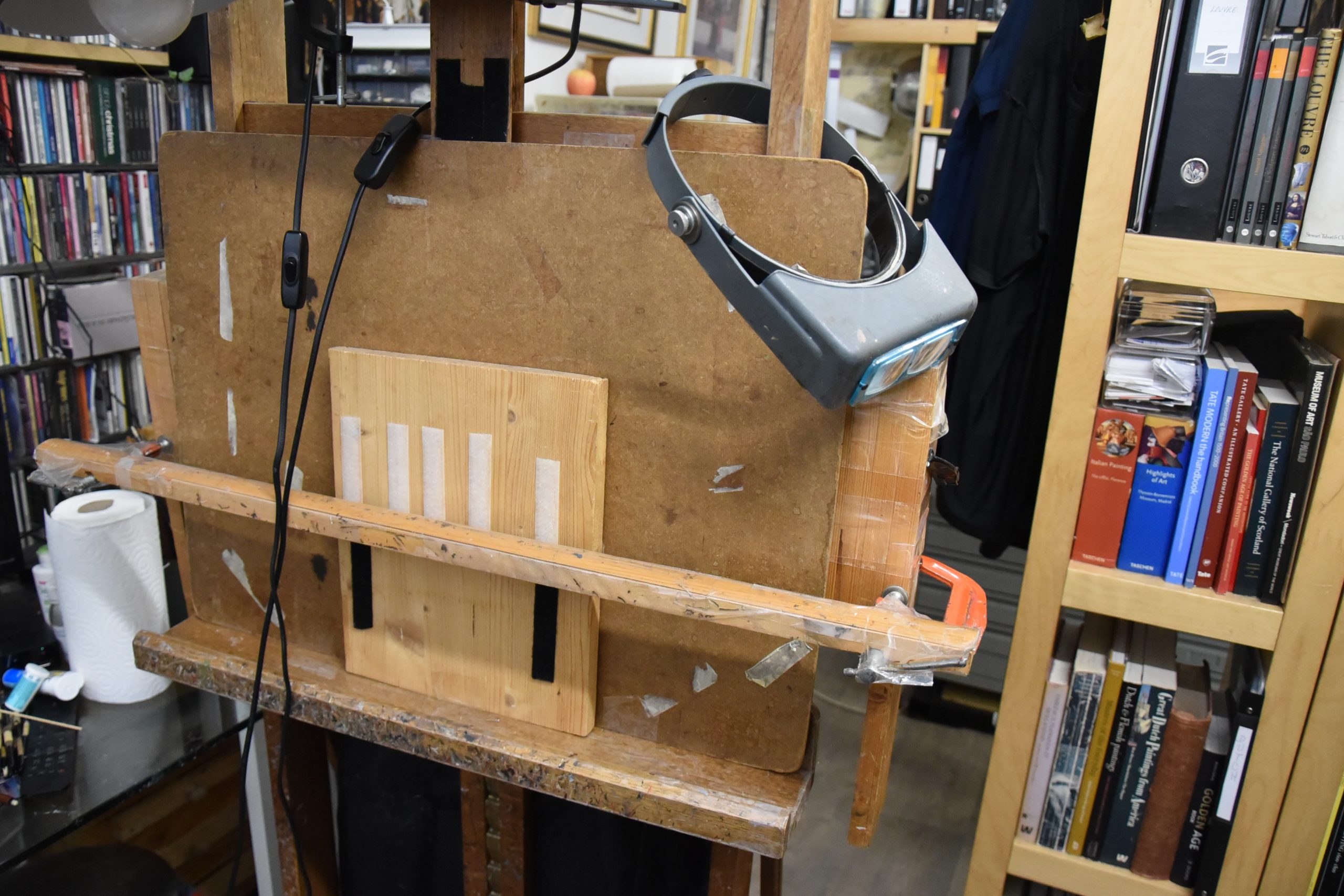
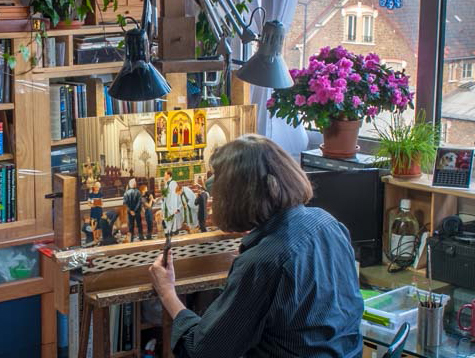
Photo ©2016 Frédéric Bali
Evertex torchon chamois. This is my painting cloth to wipe my brushes because there is no dust (my enemy!) or fibers to get on the painting. I don’t know of an American counterpart but it is a supple chamois-like surface and can be washed in hot water for repeated use.
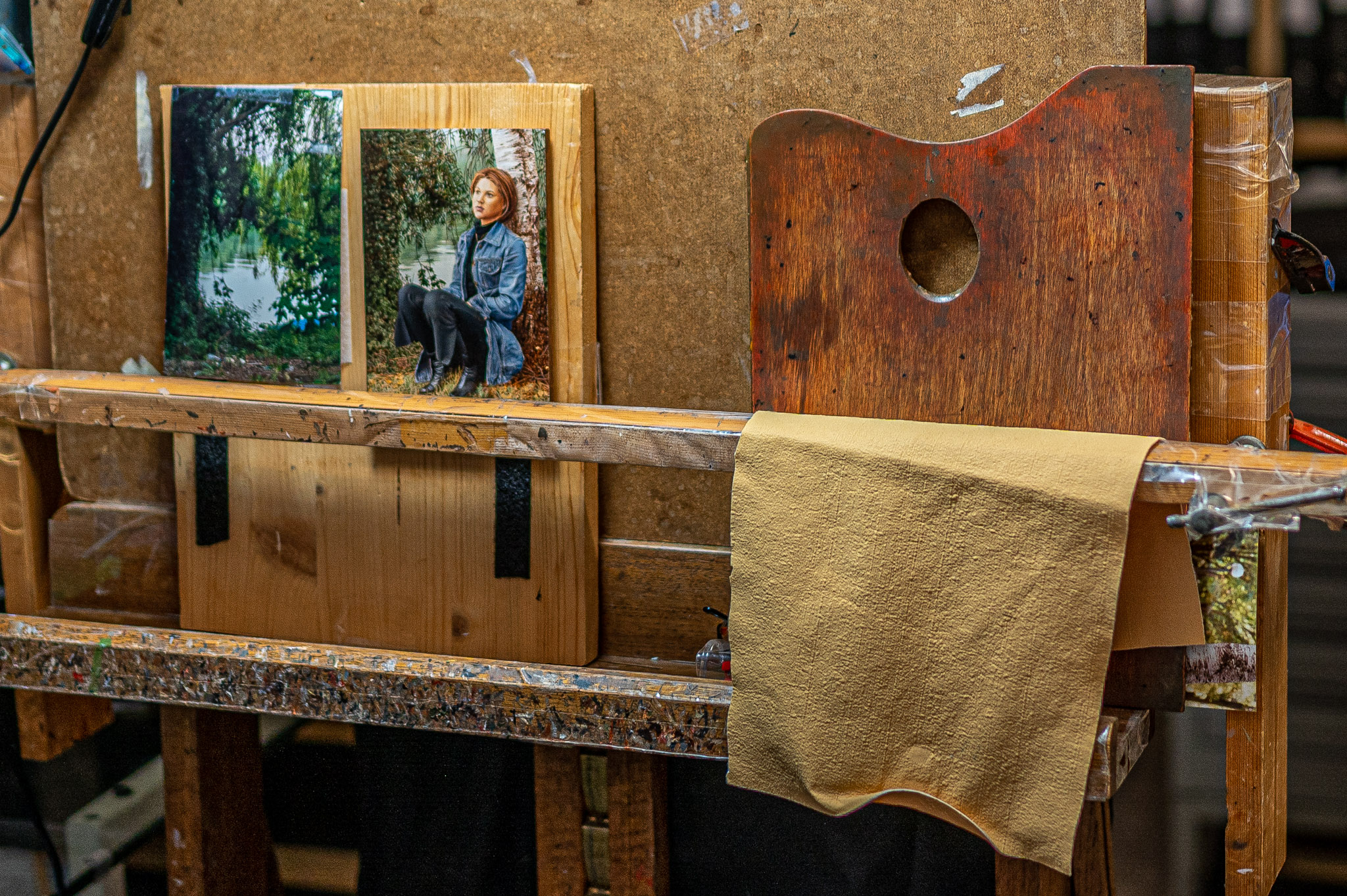
Paper towels. I use Bounty in the States and Okay Extra Absorbant in France. They are absorbant and also create less dust and loose fibers. I use the paper towels mostly for cleanup of the marble slab and palette after grinding and/or mixing paint.
The Masters Artist Soap. I put this in a enclosed dish, pour a little water on the top to keep a section of it moist and soft and use this to clean my brushes.
© 2022 Ann James Massey, SWA, CPSA, UKCPS, AAPL
Support the Artist
If you enjoy Ann’s artwork, articles, or anecdotes and would like to support her with a donation, please feel free to do so here.

